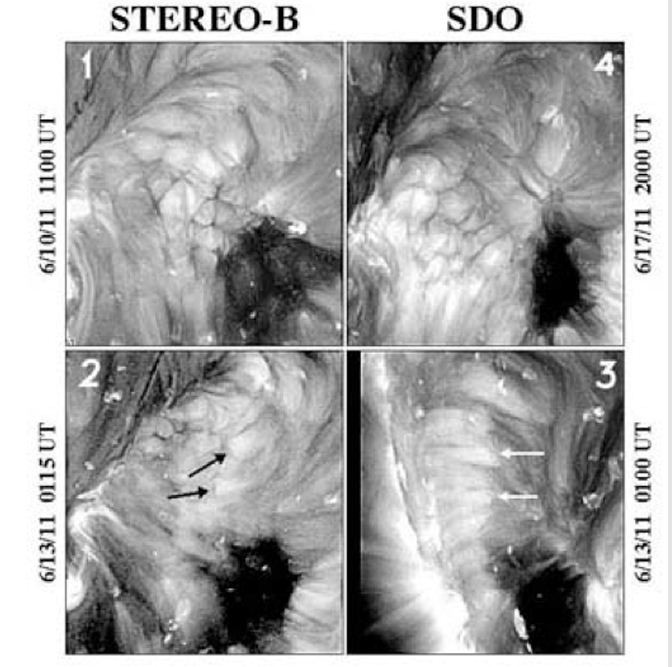Scientists Discover Coronal Cells on Sun [VIDEO]

Scientists from the Naval Research Laboratory in Washington, DC, have discovered coronal cells on the sun's atmosphere using images from Nasa's Solar Dynamics Observatory (SDO).
Neil Sheeley, a solar scientist, noticed a pattern of cells with bright centres and dark boundaries occurring on the sun's atmosphere, the corona, while looking at the daily images of the sun.
Sheeley and his colleague Harry Warren used time-lapse sequences obtained from the three satellites, SDO and two Stereo (Solar Terrestrial Relations Observatory) spacecraft to track these cells around the sun.
They checked the images that were taken from various viewpoints and different places on the surface of the sun and observed from a fleet of Nasa spacecraft called the Heliophysics System Observatory.
The experts made the discovery of coronal cells, a cell pattern that occurs on the sun's surface, similar to the bubbles that rise to the top of boiling water higher up in the corona, which is normally dominated by bright loops and dark coronal holes, reported Nasa.
The coronal cells occur in areas between coronal holes - colder and less dense areas of the corona seen as dark regions in images - and "filament channels" which mark the boundaries between sections of upward-pointing magnetic fields and downward-pointing ones.
"We think the coronal cells look like flames shooting up, like candles on a birthday cake," says Sheeley.
"When you see them from the side, they look like flames. When you look at them straight down they look like cells. And we had a great way of checking this out, because we could look at them from the top and from the side at the same time using observations from SDO, Stereo-A, and Stereo-B," he added.
The scientists also studied the placement of the coronal cells relative to the complex magnetic fields of the sun's surface. They found the magnetic field was lying at the centre inside the cells, which clearly showed the distinction between coronal cells and super granules that also have a cell-like pattern but have magnetic fields at their edges.
Second, the scientists learned more about how the coronal cells were related to other structures on the sun, in their location between a coronal hole and a nearby filament channel. They noted that the coronal cells appeared when adjacent coronal holes closed and disappeared when the holes opened, suggesting that the holes and cells share the same magnetic structure.
"Sometimes the cells were gone forever, and sometimes they would reappear exactly as they were," said Sheeley.
"So this means we need to figure out what's blowing out the candles on the birthday cake and re-lighting them. It's possible that this coronal cell structure is the same structure that exists inside the coronal holes - but they're visible to us when the magnetic fields are closed and not visible when the magnetic fields are open," he said.
The scientists believe that the evolution of coronal cells may help them understand the magnetic changes at coronal-hole boundaries and their effects on the solar wind and earth's space weather.
The study has been published in The Astrophysical Journal
Check below video that shows the changes of a coronal cell region as solar rotation carries it across the solar disk as seen with Nasa's Stereo-B spacecraft.
© Copyright IBTimes 2025. All rights reserved.





















